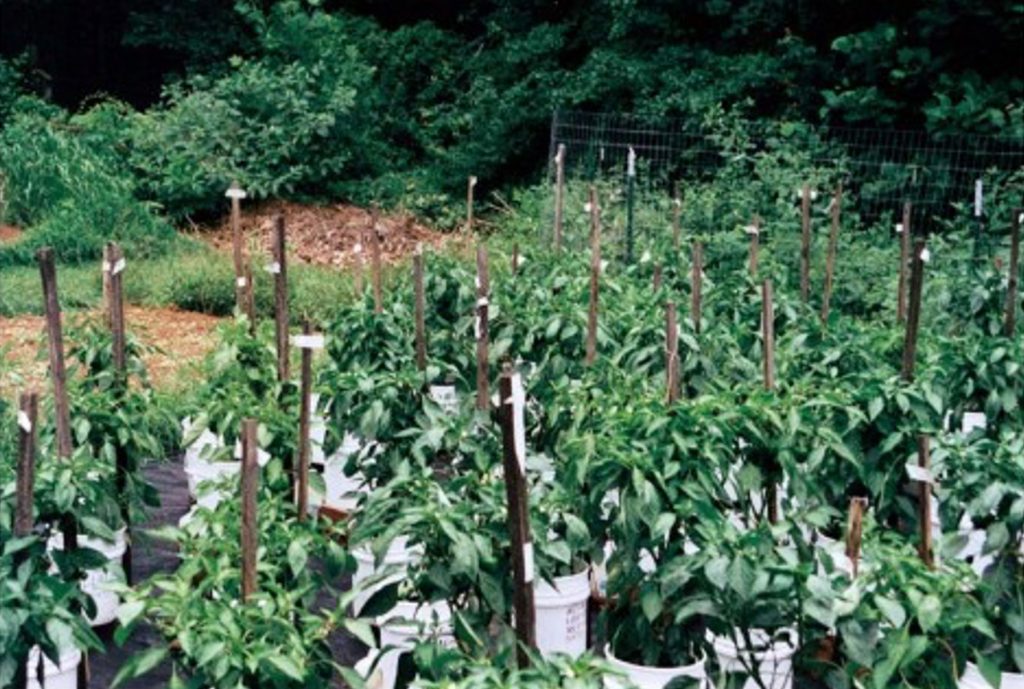Because it has essentially no unpleasant odors, well-composted poultry litter can be used indoors in a soilless potting medium. In fact, its nutrient content makes composted litter an ideal fertilizer for both indoor and outdoor gardens. It is also a good organic material for improving soil structure and drainage.
Soil Amendment
Gardeners can add composted litter to soils that otherwise contain too much sand or clay to support a garden. Work the top soil loose to a depth of 1 foot; then, spread 3 or 4 inches of compost on the soil. About 2 inches of compost may suffice at a minimum, but in really poor soils, 6 inches can be applied. Turn the soil over after the application to incorporate the compost.

Flower and Vegetable Transplants
Annual and perennial flowers and vegetable transplants also do well in compost-amended settings. Use a trowel to dig a hole in the new location. Remove the plant from its container and tear a hole in the bottom of the root-ball — otherwise, the roots will continue to grow in a tight circle — before setting it into the ground. Fill the hole with amended soil and water thoroughly. Mulching will help the plants retain water, thereby conserving this resource as well.
Transplanting Trees and Shrubs
If you are transplanting trees or shrubs, use the techniques listed above, but make sure that the hole you dig for the plant is at least twice the size of its present container. Work about 3 to 6 inches of compost into the soil in the hole and place the tree or shrub therein. Keep as much soil as possible around the root-ball when you take it out of the container. Do, by all means, remove the container, especially if it is plastic, so that the new growth will have plenty of room. The soil line on your plant should be level with your garden. Fill in the hole with the amended soil, and water the plant thoroughly to remove any air pockets that may have been in the backfill.
Potting Mix for Indoor Plants
To make your own potting medium, use equal parts of composted litter and composted pine bark — or equal parts composted poultry litter, peat and ??????. The bark may be screened to remove large pieces (one-half inch or larger) before mixing. Fill the new pot with 1 or 2 inches of the planting medium, spread out the roots of your plant, and set it in the pot. Remove any buds or flowers before replanting to ensure that the plant has time to get properly established. Transplant from one pot size to the next one only; skip one size if you have to, but don’t go from a 1-inch pot to a 4-inch pot and expect to succeed. Water the plants in the fall and winter; fertilize them in the growing seasons — spring and summer.
Lawns
Compost is a superior product to use to establish new lawn areas. Spread about 2 inches of compost on the area to be seeded. Then turn the soil over to a depth of 6 inches to incorporate the material. Place turf on the prepared soil and water it as usual. The addition of compost to the soil helps hold moisture and improves drainage.
Top dressing lawns in the spring with 1/2 to 1 inch of composted poultry litter will provide nutrients for spring green-up and help break down any thatch from the previous season.
Fertilizer
The nutritional analysis of compost varies depending on compost feedstocks and handling, among other variables. However, most composted litter will have an analysis similar to 2-2-2 commercial fertilizer. That is, it should have no less than 2 percent nitrogen (N), 2 percent phosphorus acid (P2O5), and 2 percent potassium as potash (K2O). Two quarts of broiler litter compost can be applied monthly to your vegetable and flowering plants. It should be worked into the soil lightly — at the drip line or where the water falls naturally from the leaves.
References
Behe, B.K. 1990. Horticultural Uses of Composted Broiler Litter. Poultry By-product Management, Horticulture. DTP Circular 11/90-012. Cooperative Extension Service, Auburn University, Auburn, AL.
Bouwkamp, J. 2003. Personal communication. Department of Natural Resource Sciences and Landscape Architecture, University of Maryland, College Park.